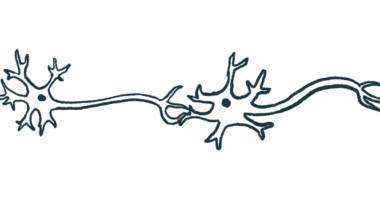Study Reveals How Growing Motor Neurons Guide Blood Vessel Growth
Data may help advance ALS knowledge and motor neuron replacement therapy

An international team of researchers discovered how, during development, motor neurons — the nerve cells controlling movement whose death causes amyotrophic lateral sclerosis (ALS) — direct blood vessel growth around them while growing toward target muscles.
Specifically, motor neurons were found to secrete a combination of signaling molecules that both attract and repel blood vessel growth, allowing nerve fibers to develop with nearby sources of nutrients but simultaneously ensuring that blood vessels do not block their growth.
The findings were detailed in the study “Motor neurons use push-pull signals to direct vascular remodeling critical for their connectivity,” published in Neuron.
“This discovery reveals a set of molecular and cellular interactions that had not been understood before,” Samuel Pfaff, PhD, a co-author of the study, a professor in the Gene Expression Laboratory and the Benjamin H. Lewis chair at the Salk Institute for Biological Studies, said in an institute press release.
“Our discovery of how these genes regulate blood vessel growth and neuron development has implications that range from understanding how other brain circuits form to even understanding how cancer cells interact with their environment,” Pfaff added.
Findings may help understanding of diseases that affect motor neurons
The findings may also help researchers better understand diseases “in which motor neuron connections are destroyed, such as amyotrophic lateral sclerosis (ALS) or spinal muscular atrophy (SMA),” the release stated.
Neurons, or nerve cells, require a lot of energy for the demanding task of sending electrical signals to communicate with each other, so they need to get a lot of nutrients out of blood.
Because of this, when their nerve fibers, or axons, are growing in early development, they secrete signaling molecules to attract the endothelial cells that form blood vessels, ultimately allowing the axon to grow with ready supplies of close-by blood vessels.
While parts of this process are well-characterized, other aspects remain puzzling. One long-unsolved question is how axons manage to attract new blood vessels to grow very close to them, but also simultaneously avoid running into the blood vessel itself.
To address this, Pfaff and colleagues in Italy, the U.S., and Portugal conducted a mutagenic mouse screen. Put simply, they generated a bunch of mice with mutations in random genes, and then looked for mice with abnormalities in nervous system development, specifically focusing on motor neurons.
Our discovery of how these genes regulate blood vessel growth and neuron development has implications that range from understanding how other brain circuits form to even understanding how cancer cells interact with their environment
Researchers examine mice with Plxnd1 mutation
The team zeroed in on a gene called Plxnd1, which provides instructions for making a protein receptor known as Plexin-D1.
In mice with a specific Plxnd1 mutation that’s likely to affect plexin-D1’s function, the ability of motor neuron axons to navigate toward their targets (the muscles they control) was markedly impaired. Also, there was abnormal blood vessel placement that suggested an “endothelial barrier” — blood vessels getting in the way of developing axons.
“In addition to disrupted axon-endothelial interactions in the periphery, Plxnd1 mutant embryos displayed severe defects in vascular patterning in the [spinal cord],” the researchers wrote.
In further experiments, the researchers found the same developmental defects in mice carrying the Plxnd1 mutation in only their endothelial cells, but animals with the mutation in only their motor neurons had normal development.
“There is a collision between growing axons and vascular cells. When you take this receptor away from the blood vessel cells, the motor axons collide with blood vessels, and their progress toward the muscles is impaired and blocked,” said Dario Bonanomi, PhD, the study’s senior author and group leader for molecular neurobiology at the San Raffaele Scientific Institute in Milan, Italy, and formerly of Salk.
The Plexin-D1 protein works alongside other receptor proteins called neuropilins (NRPs) to detect a signaling molecule known as Sema3C.
In a battery of additional tests, the scientists demonstrated that Sema3C is released from growing motor neuron axons, binding to Plexin-D1/NRP complexes at the surface of endothelial cells to cause a “repelling” effect, directing blood vessels to grow away from the nerve fiber.
“Together, these studies show that Sema3C derived from [motor neurons] repels [endothelial cells] through Plexin-D1/NRP complexes,” the team wrote.
In addition, a protein called vascular endothelial growth factor (VEGF) was found to be released by motor neuron axons to attract endothelial cells.
Notably, the results specifically demonstrated that “Sema3C-repulsion functions at short range, while VEGF-attraction operates at distance,” the researchers wrote.
These findings highlighted the delicate balance between blood vessel-attracting and -repelling stimuli released by motor neuron axons so that they develop with nearby blood vessels, but the blood vessels don’t get in their way of reaching target muscles.
The researchers believe the data may help address the obstacles in the development of stem cell-based motor neuron “replacement therapy,” which is being evaluated as a potential strategy for diseases where motor neurons degenerate, including ALS and SMA.







